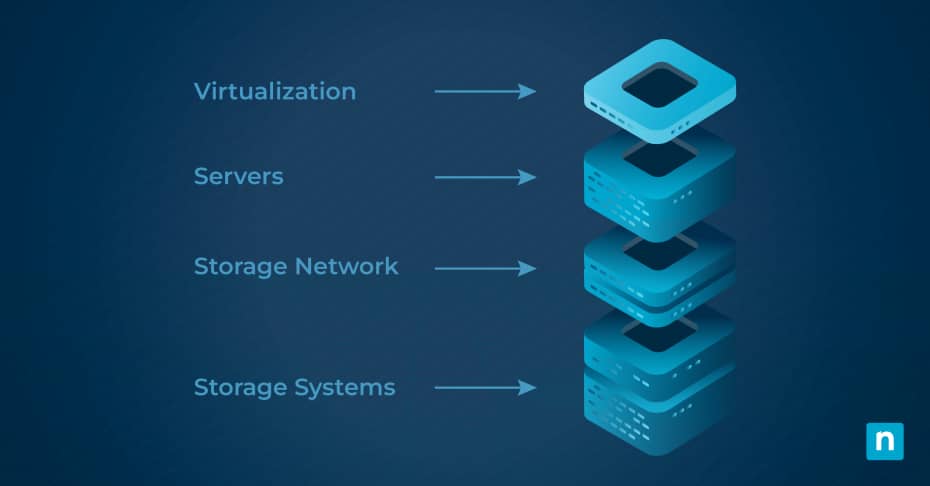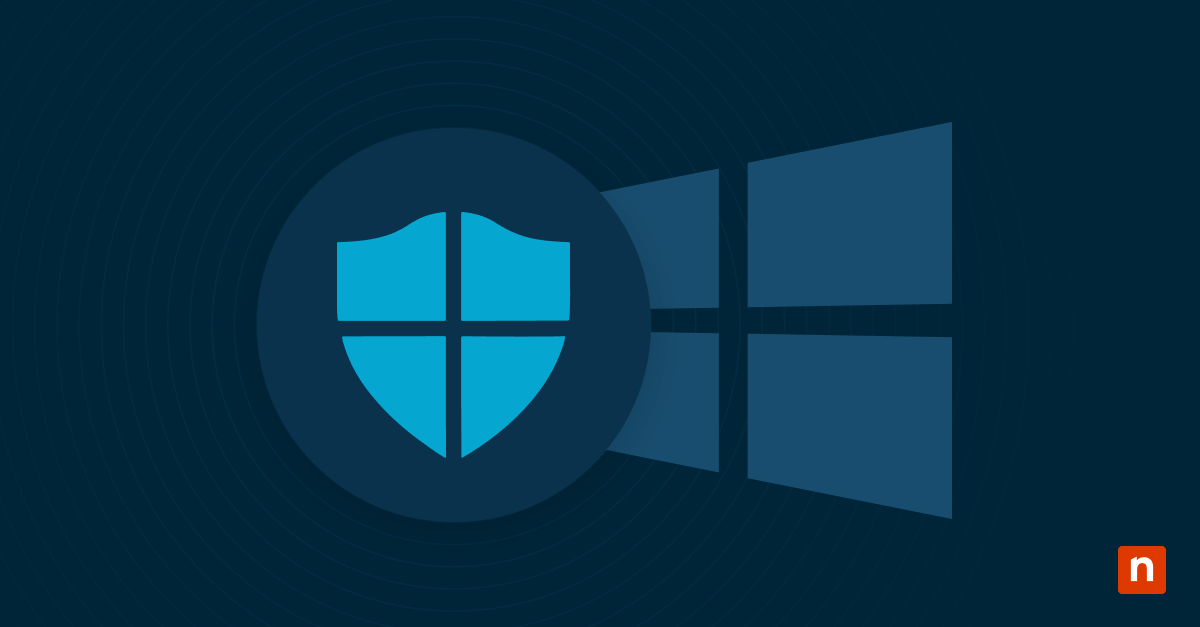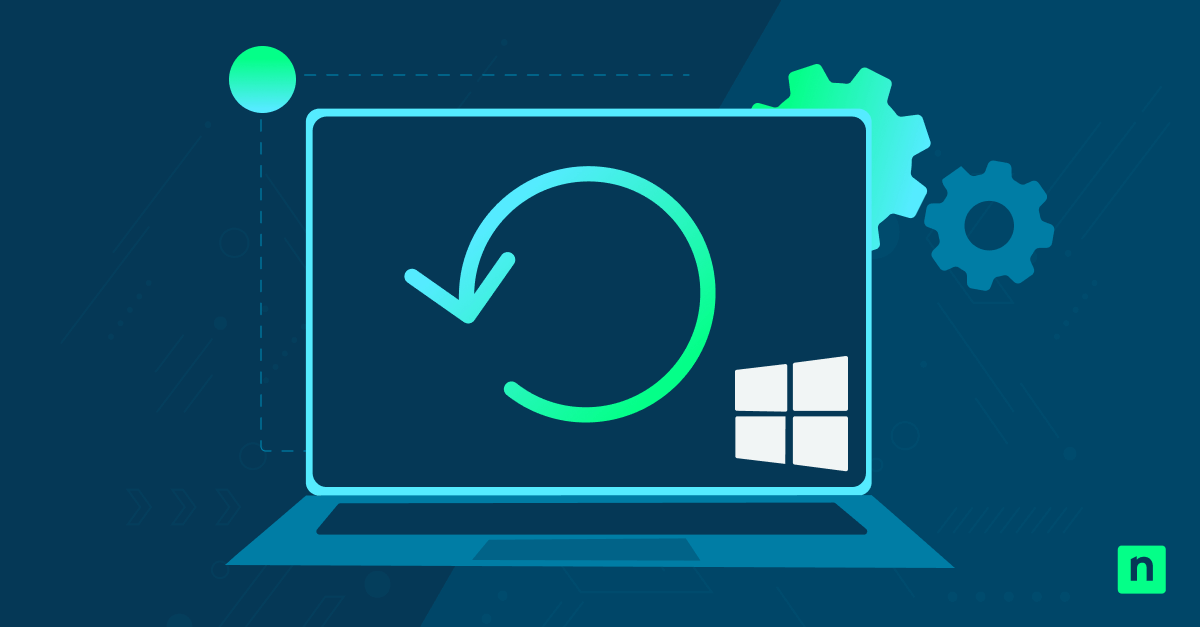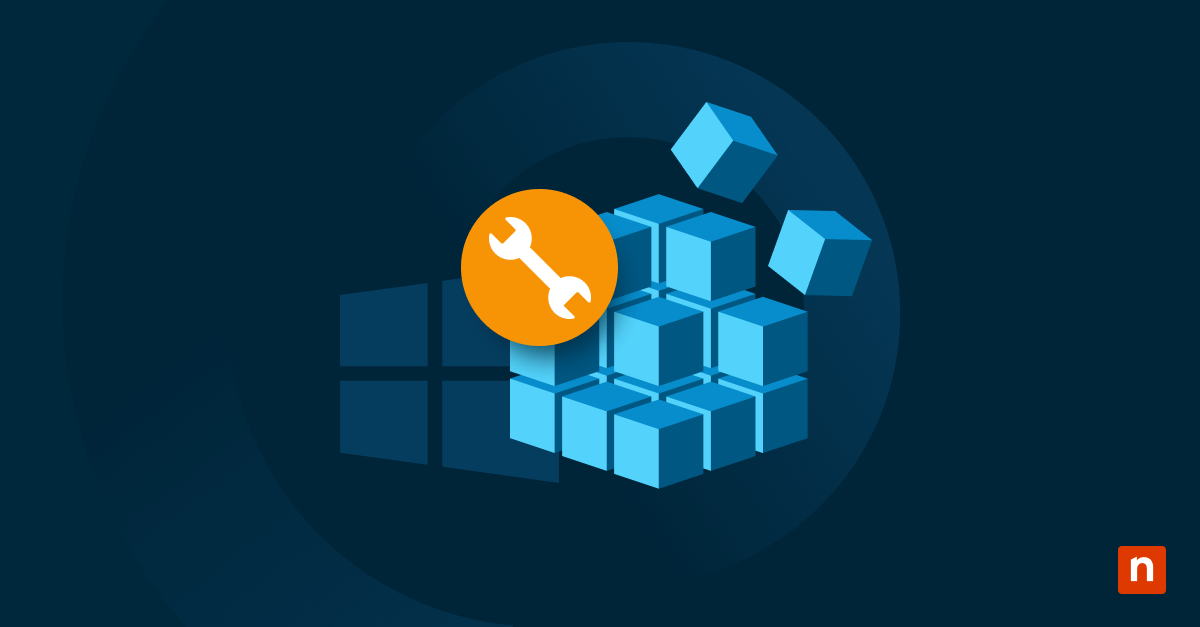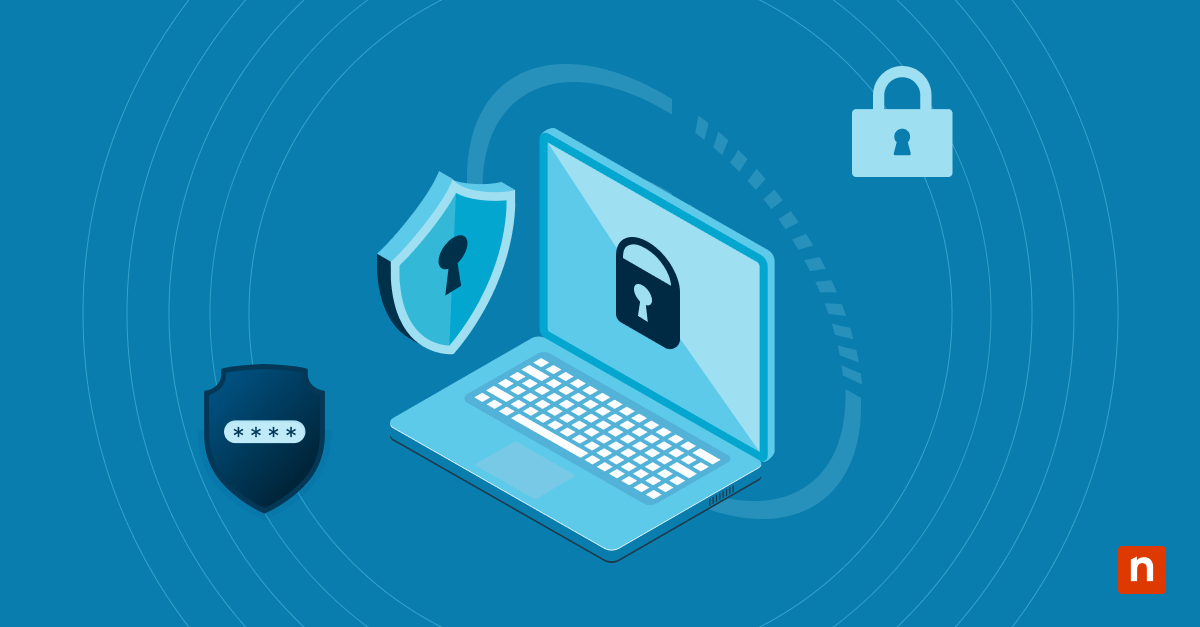Converged infrastructure (CI) unites compute, storage, and networking resources in a pre-configured package that is sold and operated as a single system. This brings several advantages to IT operations, including faster and simpler deployment, streamlined maintenance, consistency, and scalability.
This comprehensive guide explains converged infrastructure, its components, purpose and benefits, and how it differs from traditional IT deployments. This will help you understand its significance and help you decide whether you should choose CI when modernizing your IT infrastructure.
Definition of converged infrastructure (CI)
Converged infrastructure removes the overheads of designing, implementing, and in some cases, maintaining IT infrastructure solutions by combining all of its components into a single package. This is usually supplied by an IT vendor, and all components are pre-configured and pre-tested to your specification.
This differs from traditional infrastructure in which you purchase, assemble, configure, and test yourself (i.e., purchasing separate networking, storage, and compute components, putting them together, installing an operating system, and then installing and configuring each individual software package).
CI has similar goals to infrastructure as a service (IAAS) in that it aims to streamline your IT operations by providing a unified IT infrastructure solution, tailored to your requirements, but with reduced deployment and management overheads compared to traditional on-premises and cloud infrastructure.
Components of converged architecture
The key components that are usually provided in a converged infrastructure (sometimes referred to as converged architecture) are:
- Compute: This includes the servers that provide the processing power to your converged infrastructure. It may be a single machine, or a distributed system made up of multiple nodes.
- Virtualization/Hypervisor: Most modern IT deployments rely on virtualization to improve the flexibility and reliability of their systems. For example, a mail server may be run in a virtual machine to keep it isolated from the rest of your network, and so that it can be cloned for backup purposes. A hypervisor is the software that manages virtual machines that run on your servers.
- Storage: Storage in converged systems is usually provided by a mix of technologies. This includes high speed storage like SSDs and NVMe for running operating systems and software as well as caching to ensure that storage does not become a performance bottleneck, and good old-fashioned spinning-disk HDDs for bulk storage. For important data, RAID arrays are deployed, and on-premises object storage is also popular where scalability is important.
- Networking: High performance networking is a must for any converged infrastructure. By its definition, CI consists of multiple components, and they must be able to communicate as quickly and reliably as possible. CI packages will include everything from routers and switches, to the cables that connect them.
- Management and automation: The unification of all of the components of a converged system is only complete with a robust set of management and automation tools that let you centrally manage and monitor the health of all of the components.
These components come out-of-the-box pre-configured in a single integrated IT solution (though some assembly may be required depending on the services offered by your CI vendor).
How converged infrastructure works
Like any other IT system, you must first identify your requirements and choose an appropriate CI solution that provides the components (including hardware and software) that meet them (for example, you may require a high performance storage technology that is only provided by a particular vendor). Then, you can design your system, focusing on performance, redundancy, and availability using the components made available by the vendor. You can also choose from pre-configured packages that are optimized for specific use-cases, further reducing the work required to modernize your IT operations.
You’ll need physical space for your CI deployment, either in a colocation data center or at your own premises. If the latter, you’ll need appropriate power, HVAC, and connectivity. Once your CI hardware is installed and connected to power and networking, you can power it up and start using it immediately (depending on the level of pre-configuration).
Benefits of converged infrastructure
There are numerous advantages to purchasing converged infrastructure for businesses who want to modernize their IT systems without having to redirect or expand their existing IT teams. These include:
- Tightly integrated components: All components are integrated and managed through the same software, and guaranteed to be compatible.
- Cost savings and ROI: You do not need to design or test (and in some cases, deploy) your CI infrastructure as it is all done for you. While this can have a higher upfront cost, it can have a long term return on investment for organizations that want to maintain a leaner IT team that focuses on addressing issues, not designing infrastructure.
- Reduced complexity and easier management: Converged systems can be considered a single moving part for planning purposes, rather than multiple IT components. Additionally, virtualization in a CI architecture can reduce the amount of hardware required.
- Optimized performance and efficiency: Components are configured and tested to work together.
- Single point of contact for support: As all components are provided by the same vendor, there is a single point of contact for support, rather than having to contact multiple vendors for different components.
Additionally, CI deployments can be easily expanded due to their standardization — an important factor for any growing business.
Comparison with hyper-converged infrastructure
Another integrated IT solution is hyper-converged infrastructure (HCI). This is an even further integration of IT infrastructure in which all components are software defined, offering cloud-like functionality. It is designed to be scalable by pooling resources from multiple nodes, and using virtualization to define the compute, storage, and network connections in a virtual IT infrastructure.
Rather than adding additional resources to individual components (for example, adding hard drives to a storage array), additional nodes are added, and resources are assigned to the virtual components. This modular approach is readily scalable, and can streamline management even further by reducing the amount of unique hardware required.
Converged infrastructure best practices, challenges and considerations
You should consider CI best practices when designing your IT infrastructure:
- Planning: Carefully assess and define your requirements to ensure that your new IT infrastructure will meet them. Building a reliance on infrastructure that doesn’t meet needs, and then having to supplement it with additional systems, can lead to costly technical debt.
- Vendor choice: Ensure that your CI vendor can provide software and hardware components that meet your requirements, and that are compatible with any existing infrastructure. If you require ongoing support or staff training, ensure that these are available and clearly defined in your contract. You should also check the reputation of your vendor before putting them in charge of building and configuring your CI, as well as consider vendor lock-in and any ongoing costs that you may be committing to.
- Management tools: Ensure that management tools are being regularly updated and offer the latest features such as automation, and that it integrates with other platforms you use.
- Security and data protection: This should be a priority for any IT project, and is especially important for the IT infrastructure your business relies on. Regulatory compliance with data protection laws (such as GDPR and CCPA) is a requirement for any business that wishes to attract a global customer base.
- Scalability: Assess your future requirements and ensure that the integrated IT solution you choose can be expanded to meet them.
- Disaster recovery: Malware, fire, or theft — disasters happen and you need to recover quickly to ensure business continuity. Make sure your data is backed up, and if you require high availability, that redundant infrastructure is part of your CI solution.
Consider also the level of convergence you require — some CI solutions come pre-racked and ready to roll into the data center — which can be advantageous if you are not going to be physically present to assemble it yourself. You should also evaluate whether you need on-premises hardware at all, as many businesses benefit from the reduced maintenance overheads and unified platforms provided by cloud infrastructure.
CI streamlines your servers and networking, but you still need endpoint management
Streamlining your IT operations doesn’t stop in the server room or datacenter. The integration, management, and cost saving benefits of converged infrastructure can be extended to your endpoints (including workstations and mobile devices) with remote monitoring and management (RMM) software.
NinjaOne provides a unified RMM platform that lets you monitor and manage the configuration and security of your business devices from anywhere in the world, and that can integrate with your CI architecture for full visibility and control over your IT assets.

